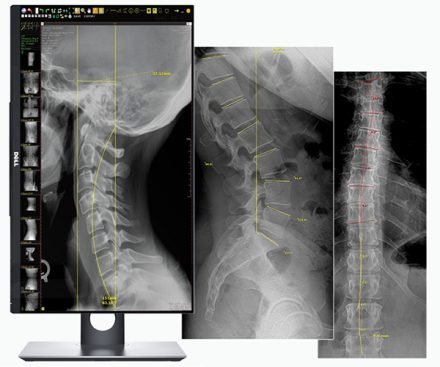
The idea behind mobile x-ray machine technology and mobile medical imaging equipment is simple: bring diagnostic quality x-ray services directly to the patients.
Generally, these patients can’t be brought easily or safely to an x-ray room in a hospital or other clinic. Contrary to popular belief, mobile x-ray isn’t just for rural areas.
Urban as well as suburban patients take advantage of these services in a variety of settings. Including nursing homes, prisons, in-home care, disaster and emergency relief, crime scene investigation and morgues.
Today’s technology can make mobile x-ray businesses efficient and profitable, while continuing to deliver high quality healthcare.
Digital imaging technologies, such as CR, have eliminated some of the key challenges associated with developing and distributing medical images.
Lightweight CR readers, cellular data networks, laptops and reusable plates allow the x-ray technologist to go from taking the x-ray to delivering the images to a physician in a matter minutes.
The mobile x-ray machine technology used in a successful digital mobile and portable x-ray business can seem daunting, however it really isn’t. In the section below we’ll go over each of the key components and detail their benefits and how they all tie together.
The best portable x-ray units for mobile x-ray are small, lightweight and use standard power outlets. In contrast to the portable x-ray units often seen in hospitals, these often weigh less than a 100 pounds and have no large batteries.
These frequently have lightweight metal frames that can fold into a size suitable for transport in a vehicle. It is important to select a portable x-ray unit that has wheels and is light enough to be easily moved by any technologist but still powerful enough to take detailed images of any part of the body.
Features to look for in portable x-ray units for mobile x-rays
The essential for function of CR, or computed radiography, is to convert the radiation absorbed by the plate into a digital x-ray image. CR has three basic components. The first is the CR reader and the second is the acquisition workstation, in most mobile situations it is a laptop.
The third component is the cassette and phosphor plate. There is no film output, as the resulting images are digital. Both of the larger components can be placed inside of the vehicle and the technologist can scan and view the image within minutes of taking the x-ray.
This allows the technologist to decide if any additional x-rays are needed while they are still with the patient. A minimum number of cassettes need to be carried in the vehicle at any time because the CR cassettes and plates can be reused thousands of times.
Features to look for in a CR for mobile x-ray
PACS is a server that acts as a centralized means of image storage and distribution. While some mobile x-ray companies view PACS as optional, it can be a huge advantage over the competition. PACS are very compatible with mobile x-ray machines!
It can automatically distribute images to the correct radiologist, provide a backup of images in case of emergency and it can make images available to referring physicians immediately over the web. In addition to these benefits, the price of PACS has dropped dramatically over the past few years, making this purchasing a PACS very cost-effective.
Features to look for in a PACS for mobile x-ray
For digital mobile x-ray, understanding how your network will be setup is crucial. The network replaces the need for delivery of physical films. Depending on the area and what the needs of the clients are, there are some important decisions to be made regarding networking.
The digital images can be sent over the network to radiologist or referring physicians a couple of different ways. One way is to take advantage of cellular wireless networks. A “broadband card” can be purchased with a data plan from many providers. It will allow a laptop with this card to connect to the internet and send images to a destination anywhere within the cellular company’s range.
This is very convenient because the images can be sent from the laptop while the technologist is driving to the next client. However, many rural areas have little or no cellular data service available. Also, the data transfer of these images can be very slow. When choosing this option it is very important to find a cellular company that has very good coverage in the area.
It’s also important that the images be encrypted when sending over the open Internet. Finding a good router with a VPN client will solve this problem. The other option is to connect to a local network at the home office.
The data speeds will be significantly higher, however it means that the images on the laptop cannot be sent until the technologist returns to the main office. Which option you choose, or a mixture of both, depends on your circumstances.
Features to look for in a network for mobile x-ray
When picking out a vehicle to house your mobile x-ray machine it is important to take into account a few things. The vehicle will need to have available room for the mobile x-ray machine and it will need to be easily accessible for the technologists to take in and out. In addition it needs to have room for the CR and for the technologist to insert and remove the cassettes, as well as room for the laptop.
There are many options available both new and used including vans, mini-vans, SUVs and crossover SUVs. Some of the more popular vehicles recently have been the Honda Element and the Scion because they have available space and good gas mileage. In addition, a power inverter is needed in for any chosen vehicle to convert the power to standard AC for the laptop and the CR reader.
Features to look for in a vehicle for mobile x-ray